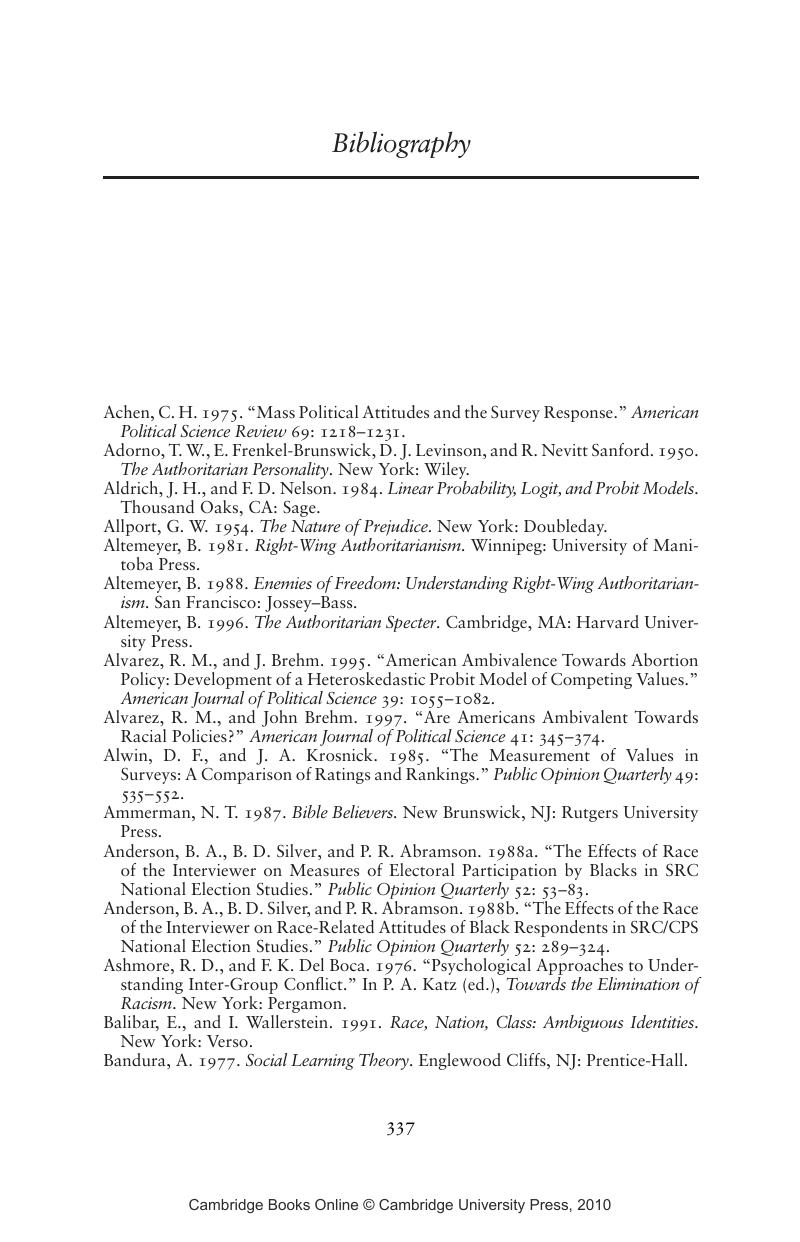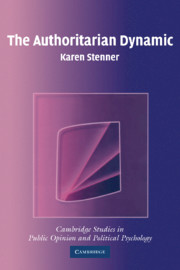Book contents
- Frontmatter
- Contents
- List of Tables
- List of Figures
- Acknowledgments
- 1 Introduction: The Authoritarian Dynamic
- 2 Kindred Spirits, Common Spark: The Theory of the Authoritarian Dynamic
- 3 Manipulating Threat and Reassurance: Data and Methods
- 4 The Authoritarian Dynamic and the Politics of Fear: Putting the Pieces of the Puzzle Together
- 5 Authoritarianism and Conservatism across Cultures
- 6 Authoritarianism and Conservatism: How They Differ and When It Matters
- 7 One True People: Putting a Face on the Theory
- 8 One Right Way: Fleshing Out the Portrait
- 9 Manning the Barricades: Racism and Intolerance under Conditions of Normative Threat
- 10 The Authoritarian Dynamic: Implications
- Bibliography
- Index
- Titles in the series
- References
Bibliography
Published online by Cambridge University Press: 05 June 2012
- Frontmatter
- Contents
- List of Tables
- List of Figures
- Acknowledgments
- 1 Introduction: The Authoritarian Dynamic
- 2 Kindred Spirits, Common Spark: The Theory of the Authoritarian Dynamic
- 3 Manipulating Threat and Reassurance: Data and Methods
- 4 The Authoritarian Dynamic and the Politics of Fear: Putting the Pieces of the Puzzle Together
- 5 Authoritarianism and Conservatism across Cultures
- 6 Authoritarianism and Conservatism: How They Differ and When It Matters
- 7 One True People: Putting a Face on the Theory
- 8 One Right Way: Fleshing Out the Portrait
- 9 Manning the Barricades: Racism and Intolerance under Conditions of Normative Threat
- 10 The Authoritarian Dynamic: Implications
- Bibliography
- Index
- Titles in the series
- References
Summary

- Type
- Chapter
- Information
- The Authoritarian Dynamic , pp. 337 - 354Publisher: Cambridge University PressPrint publication year: 2005



